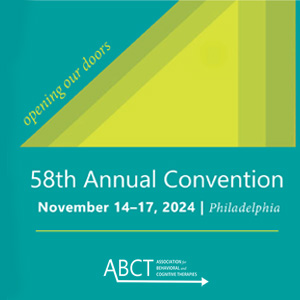Dissemination & Implementation Science
Applying Design to Design: Demonstrating How to Create a Human-Centered Design Interview Guide for Use with Adolescents
(PS9-7) Applying Design to Design: Demonstrating How to Create a Human-centered Design Interview Guide for Use with Adolescents

Macarena Kruger, B.S.
Clinical Psychology MA Student
Northwestern University Feinberg School of Medicine
Chicago, Illinois, United States- AG
Andrea B. Goldschmidt, Ph.D.
Visiting Associate Professor of Psychiatry
University of Pittsburgh School of Medicine
Pittsburgh, Pennsylvania, United States 
Adrian Ortega, Ph.D.
Postdoctoral Fellow
Northwestern University Feinberg School of Medicine
Chicago, Illinois, United States- AW
Abigail Wharton, M.S.
Research Specialist
University of Pittsburgh
Pittsburgh, Pennsylvania, United States - DC
Danielle A. N. Chapa, Ph.D.
Postdoctoral Scholar
University of Pittsburgh School of Medicine
Pittsburgh, Pennsylvania, United States - ES
Erin R. Stalvey, B.S.
Senior Research Specialist
University of Pittsburgh School of Medicine
Pittsburgh, Pennsylvania, United States 
Isabel R. Rooper, B.A.
Research Study Coordinator
Northwestern University Feinberg School of Medicine
Chicago, Illinois, United States
Katrina T. Obleada, Ph.D.
Pediatric Psychologist
Ann & Robert Lurie Children's Hospital of Chicago; Northwestern University Feinberg School of Medicine
Chicago, Illinois, United States
Andrea K. Graham, Ph.D.
Assistant Professor
Northwestern University Feinberg School of Medicine
Chicago, Illinois, United States
Author(s)
Co-Author(s)
Background: Digital health interventions (DHIs) are promising for improving the reach of mental health care to adolescents, particularly those from under-resourced communities who may find cost and geographic location of in-person services prohibitive. Yet, low engagement and uptake have challenged DHIs’ potency. Human-centered design (HCD) is a methodology that prioritizes end-users’ preferences to iteratively design tools that meet their needs. Applying HCD to design DHIs can improve user engagement and digital health equity by soliciting and centering the voices of individuals from diverse backgrounds. Clinical scientists are increasingly embracing HCD, but often lack training and expertise in how to apply these methods in practice. This abstract presents how we created a design session interview guide for use with adolescents in a needs assessment, which is the first phase in our HCD process to design a CBT-based DHI for dysregulated eating and weight gain prevention in adolescents.
Methods: To create the guide, we followed the phases of HCD. We first conducted a “needs assessment” within our team to identify the questions that would be important to answer in a needs assessment with adolescents. Then we narrowed these ideas into structured domains through a brainstorming process (“ideation”), which resulted in an initial draft of a design session guide (“prototype”). Next, we conducted iterative usability testing of the prototype to refine it prior to administration with adolescents.
Results: Our internal needs assessment identified that we needed to learn adolescents’ preferences for technology (e.g., desired features), clinical content (e.g., areas for specialized support), delivery (e.g., coaching preferences), and developmental relevance. We organized these into six domains: 1) dysregulated eating experiences and current help-seeking behaviors; 2) major challenges that impact dysregulated eating (e.g., what leads to these episodes, barriers to stopping); 3) preferred intervention features and skills (e.g., eating log), including for parental involvement; 4) preferences for coaching support (e.g., who, via what modality, how often); 5) the potential role of sensors (e.g., to assess activity behaviors); and 6) preferred aesthetics and brand (e.g., interface design, DHI name, logo). We created relevant prompts within each domain, revised, and reordered the prompts to elicit more comprehensive responses during administration. Next, we practiced administering the guide internally amongst our team, then with a non-participant adolescent volunteer. We updated the guide after each practice by improving language and question flow within the six domains and shortening the interview from 1 hour to 45 minutes to maintain adolescents’ attention.
Discussion: Using HCD, we created a semi-structured design session interview guide that will be administered in a upcoming needs assessment with adolescents. The prompts will continue to evolve as we learn from adolescents. As clinical scientists are increasingly encouraged to apply HCD methods in their DHIs’ design to improve uptake, this case example unpacks the process of creating and iterating a design session guide that could be applied across diverse clinical domains.

.png)
